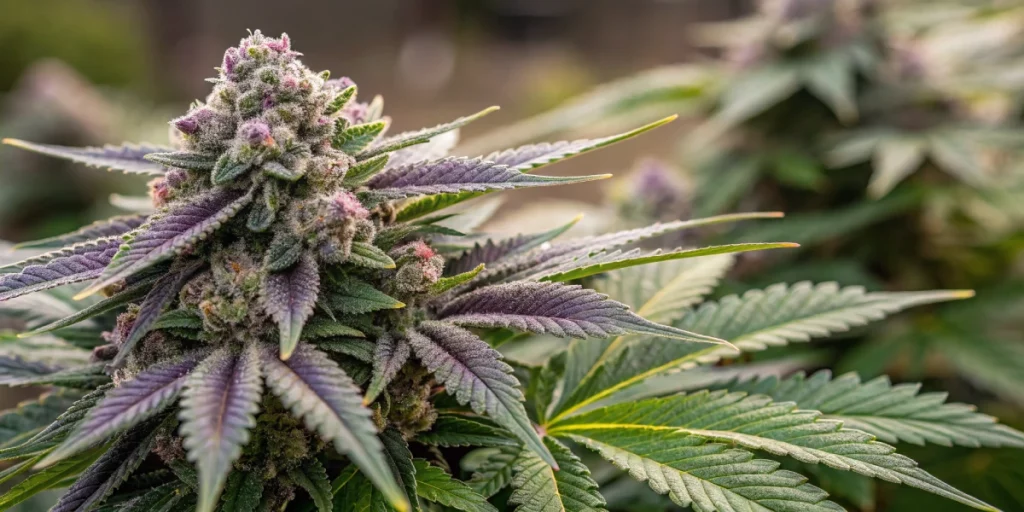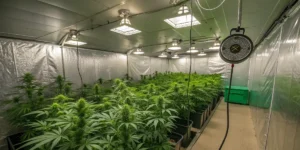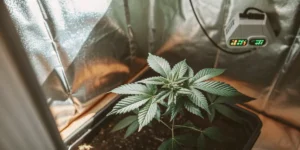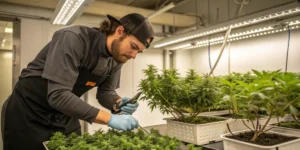Super Bud strain: Exceptional Genetics and Effects
Origins and Genetics
Super Bud strain originates from a carefully engineered blend of premium genetics that combine strong indica characteristics with bursts of sativa energy. This auto-flowering strain is designed for simplicity in cultivation, ensuring that it flowers based solely on age rather than light cycles. Its compact, sturdy structure and predictable growth pattern make it perfect for small spaces, while its stable genetics deliver consistent, high-quality yields with every cycle.
The lineage of Super Bud strain is refined over many generations to produce buds that are both dense and resinous. Its genetic makeup is tailored for both recreational and medicinal users, resulting in a plant that grows robustly under various conditions. This reliable genetic background ensures that each harvest produces buds with a distinct character and potent aroma, pleasing those who appreciate a dependable, high-quality crop.
Effects and Potency
Super Bud strain provides a balanced high that lifts the mind and relaxes the body simultaneously. Users experience a gentle, energizing buzz that sparks creativity while keeping physical tension at bay. The effects are smooth and clear, making it suitable for daytime use as well as relaxed evenings without overwhelming sedation. The strain’s potency is carefully managed to deliver moderate to high THC levels that remain consistent throughout the crop.
Moreover, the buds exude a complex flavor profile dominated by earthy and citrus notes. The aroma is inviting and vibrant, creating a sensory experience that is both refreshing and memorable. The balanced effect and potent flavor make Super Bud strain a favorite among those seeking a harmonious cannabis session that is both uplifting and calming.
Environmental Requirements for Growing Super Bud strain
Setting Up the Growing Cannabis Space
An optimal grow space is essential for successfully cultivating Super Bud strain. A well-organized area with proper ventilation, controlled lighting, and stable temperature and humidity creates an environment where the plant can thrive naturally. Whether using a dedicated grow room, a small grow tent, or even a compact indoor setup, the space should be kept clean and equipped with essential tools like fans, carbon filters, and timers. Such an arrangement minimizes stress and supports vigorous development throughout every stage.
Careful planning of the grow space allows for maximum light distribution and proper airflow, making routine tasks like watering and maintenance easier. With all necessary components in place, managing your grow becomes straightforward and efficient. This approach ultimately results in a robust crop of Super Bud strain that consistently produces high-quality, aromatic buds, keeping your cultivation process both rewarding and enjoyable.
Temperature and Humidity
During the vegetative stage, maintain temperatures between 70°F and 80°F to encourage strong, healthy growth. In the flowering phase, slightly lower temperatures can boost resin production and enhance bud quality. It is best to keep humidity levels around 50–60% early on and reduce them to 40–50% during flowering to prevent mold and mildew. These stable conditions ensure that the plant absorbs nutrients effectively and develops steadily throughout its life cycle.
Indoor Cannabis Cultivation
Advantages of Growing Indoors
Indoor cultivation provides complete control over the environment, which is particularly beneficial for Super Bud strain. This method protects the plant from unpredictable weather and pest threats while allowing you to fine-tune light, temperature, and humidity conditions for optimal bud production. Every factor, from nutrient delivery to airflow, is carefully managed, resulting in uniform, high-quality buds even in a small space. The controlled conditions also enable year-round cultivation, ensuring consistent yields regardless of the season.
Indoor growing allows you to replicate the ideal conditions needed by Super Bud strain with precision, making it possible to achieve repeatable and reliable results. With consistent adjustments and controlled variables, indoor cultivation ensures that every harvest meets high standards of quality and potency while minimizing stress on the plant.
Lighting Needs
For indoor cultivation, proper lighting is key to maximizing bud formation and overall yield. Full-spectrum LED or HPS lights provide the energy required for vigorous vegetative growth and dense bud development during flowering. Positioning the lights at an optimal distance from the canopy prevents heat stress while ensuring even distribution across the plant. This careful light setup promotes efficient photosynthesis and helps Super Bud strain reach its full potential in terms of yield and resin production.
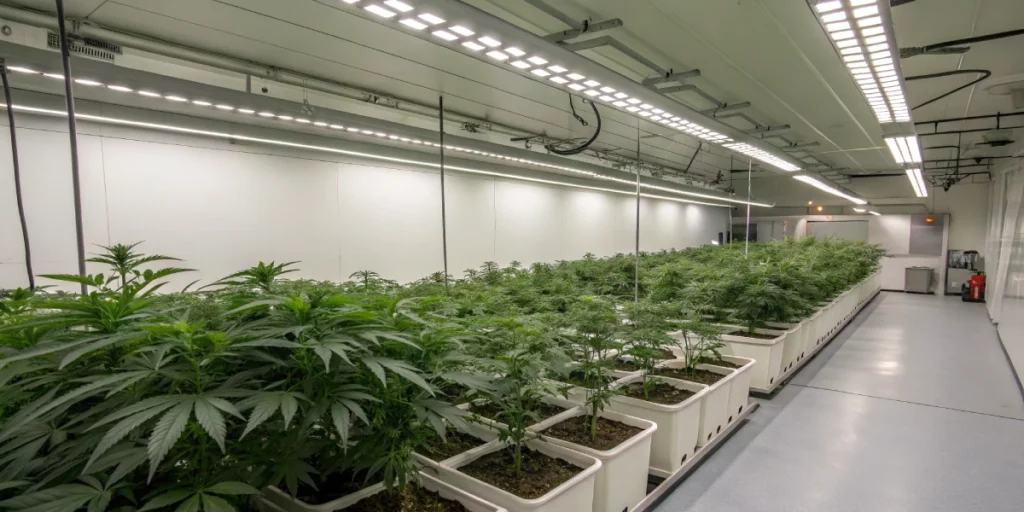
Outdoor Cannabis Cultivation
Best Conditions for Outdoor Growth
When grown outdoors, Super Bud strain thrives in sunny, warm conditions with ample natural airflow. Choose a location that receives at least six hours of direct sunlight each day; natural light enhances terpene production and intensifies the strain’s distinctive flavors. The soil must be well-draining and enriched with organic matter to support vigorous growth and robust bud formation. These conditions allow the plant to fully express its genetic potential.
A favorable outdoor environment also requires protection from extreme weather. Selecting a site that provides some shelter from heavy winds and intense rain, while still offering plenty of sunlight, is essential. With thoughtful site selection and careful management, outdoor cultivation of Super Bud strain can yield impressive, high-quality buds that rival those grown indoors.
Growing Season
Planting Super Bud strain seeds in early spring, when temperatures are consistently warm and frost is no longer a threat, allows the plant to take full advantage of long, sunny days. This scheduling extends the growing season into early fall, ensuring ample time for the plant to develop robustly and produce abundant buds. Monitoring local weather patterns and adjusting planting schedules accordingly are key to ensuring that the plant develops under optimal conditions, resulting in a vigorous and plentiful harvest.
Advantages of Growing Super Bud strain
Growing Super Bud strain offers multiple advantages, including its rapid growth cycle and ease of cultivation in small spaces. The auto-flowering trait simplifies the process, allowing multiple cycles in a single year, which is perfect for busy growers with limited space. Its stable genetics ensure consistent quality and impressive yields, making it a reliable choice for both novice and experienced cultivators. This strain is particularly favored for its ability to deliver high-quality buds that are both potent and aromatic.
The combination of a rapid cycle and compact growth makes Super Bud strain ideal for urban growers, ensuring that every square inch of your grow space contributes to a robust, rewarding crop. Its efficiency and predictable performance add value to your cultivation process by reducing the complexity and time required for successful harvests.
Problems in Cultivating Super Bud strain
Overwatering
Overwatering is a common mistake that can damage the delicate roots of Super Bud strain, leading to root rot and reduced yields. It is essential to allow the soil to dry slightly between waterings and to use containers with proper drainage so that the plant can develop a healthy root system and thrive under controlled conditions.
Pest Infestations
Pests such as spider mites, aphids, and thrips can quickly attack Super Bud strain if not controlled promptly. Regular inspections and the use of organic pest control measures help keep these threats at bay. Early detection and quick treatment are key to preventing infestations from spreading and compromising the overall health and yield of the plant. Learn how to troubleshoot overripe buds
Similar Strains
Quick One Auto
Quick One Auto offers a bright, tangy lemon flavor and balanced effects similar to Super Bud strain. It has a fast flowering cycle and produces dense, resinous buds in a compact form, making it perfect for small spaces. Its predictable yield and vibrant aroma make it a worthy alternative for those who appreciate a citrus-forward experience.
Medusa F1 Auto
Medusa F1 Auto bursts with a dynamic blend of lemon and citrus flavors that deliver an invigorating, balanced high. The strain features a rapid flowering cycle and consistently produces thick, aromatic buds. Its energetic effects and robust flavor profile make it an excellent alternative for growers seeking a refreshing, citrus-inspired strain.
Legendary OG Punch
Legendary OG Punch stands out with its radiant, citrus-infused flavor and uplifting, balanced effects. It offers a quick, auto-flowering cycle that results in dense, high-quality buds ideal for urban cultivation. Its vibrant taste and dependable performance make it a strong alternative for those looking for a strain that delivers both potency and a burst of citrus freshness.
Week-by-Week Growth Plan for Super Bud strain
Week 1 – Germination and Seedling Stage
Begin by soaking Super Bud strain seeds in water for several hours, then place them between moist paper towels in a warm, dark space until taproots emerge. Gently transfer the seeds into small pots with a well-draining medium, maintaining consistent warmth and humidity to develop a strong root system that sets a solid foundation for all future growth.
Week 2 – Early Seedling Growth
In week two, the seedlings display their first true leaves and gradually increase in size as they acclimate to light and environmental conditions. Provide gentle, indirect light and keep the soil moist but not saturated to support effective photosynthesis and build the initial strength needed for rapid development.
Week 3 – Continued Seedling Development
During week three, seedlings continue to grow larger and develop an expanded root system with additional leaves emerging. Gradually increase light exposure and maintain a balanced watering schedule to ensure steady development, thus strengthening the plant’s structure for the upcoming vegetative phase.
Week 4 – Vegetative Growth Begins
At the start of week four, Super Bud strain enters the vegetative stage with noticeable increases in size and vigor. Leaves expand and stems thicken as the plant builds a solid framework. Adjust light intensity and start a structured watering schedule with a low dose of nitrogen-rich fertilizer to stimulate rapid growth and lay a robust foundation for bud production.
Week 5 – Accelerated Vegetative Growth
During week five, vegetative growth accelerates as the plant produces abundant foliage and stronger branches. Continue regular feeding and maintain a steady watering routine while applying low-stress training techniques to shape the canopy evenly. This phase is crucial for building a resilient structure in preparation for the flowering stage.
Week 6 – Preparing for Flowering
In week six, early signs of flowering appear as small bud formations emerge and leaves begin subtle color changes. Adjust the nutrient regimen by reducing nitrogen and increasing phosphorus and potassium to support bud initiation, and maintain low-stress training while closely monitoring environmental conditions to minimize stress during this transition.
Week 7 – Transition to Flowering
Week seven marks the transition into the flowering phase. Switch to a 12-hour light and 12-hour dark cycle to prompt Super Bud strain to focus on bud production. Small buds start to emerge as the plant shifts energy from vegetative growth to flowering, and nutrient schedules are adjusted to favor bloom-specific supplements while reducing nitrogen.
Week 8 – Early Flowering
During week eight, the early flowering stage becomes more pronounced as buds form and gain density. The plant channels energy into thickening bud clusters, and nutrient delivery is fine-tuned to favor phosphorus and potassium. Consistent monitoring for any signs of stress ensures that the buds develop optimally during this critical period.
Week 9 – Mid-Flowering
In week nine, buds become more prominent as resin production increases and trichomes begin transitioning from clear to milky. Adjust nutrient management to support robust bud development while avoiding nutrient burn, with frequent inspections ensuring that environmental conditions remain ideal during this pivotal stage.
Week 10 – Bud Development
By week ten, buds are well-formed and continue maturing in density and size, with resin production intensifying and the aromatic profile becoming more pronounced. Maintain careful nutrient management and stable environmental conditions to support full bud development, ensuring every bud reaches its optimal potential for a superior harvest.
Week 11 – Late Flowering
During week eleven, the plant enters late flowering as trichomes start showing hints of amber. Buds become denser and more resinous, signaling that the optimal harvest window is near. Continue balanced nutrient delivery and stable conditions to support the final burst of bud maturation, with frequent checks addressing any last-minute issues.
Week 12 – Harvesting Time
In week twelve, Super Bud strain is ready for harvest as trichomes display a mix of milky and amber hues, and buds are dense and richly resinous. Carefully cut the plant, trim excess foliage, and hang the branches in a dark, well-ventilated area to dry for 7–10 days, preserving both flavor and potency for the final curing process.
Week 13-14 – Curing the Buds
During weeks thirteen and fourteen, focus on curing the harvested buds to enhance flavor and potency. Once the buds have dried, transfer them into airtight glass jars and open the jars daily during the first week to release excess moisture, gradually reducing the frequency. This careful curing process stabilizes the buds and develops a smoother, richer profile that reflects the care invested throughout the growth cycle.
For growers interested in exploring similar strains, our comprehensive guide on Big Bang Weed cultivation offers detailed insights
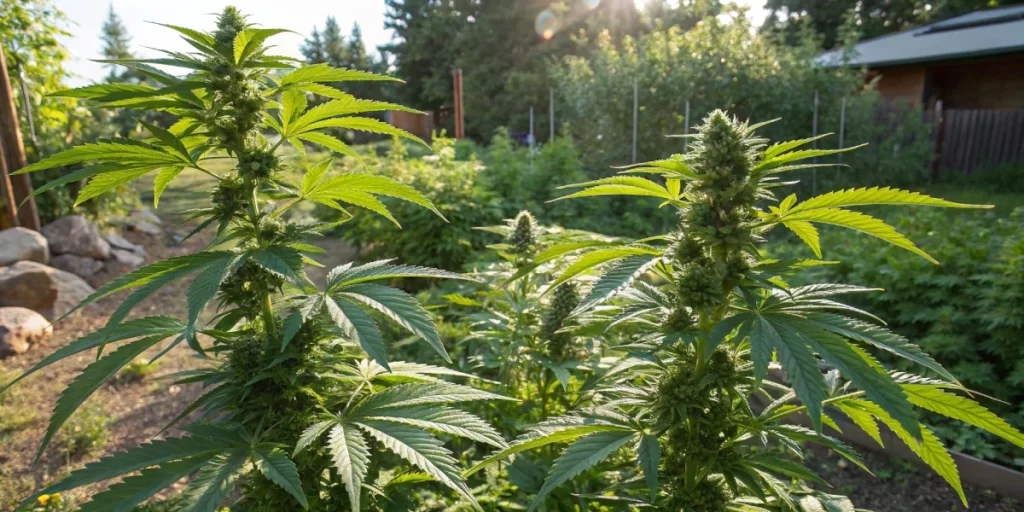
FAQs about Super Bud strain
What is the typical THC content of Super Bud strain?
Super Bud strain typically contains THC levels ranging from 18% to 24%. This balanced potency provides an uplifting high while ensuring gentle physical relaxation. The consistent cannabinoid profile results from precise breeding practices and careful cultivation, delivering a satisfying experience for both recreational and medicinal users without overwhelming sedation.
How long does it take for Super Bud strain to flower?
Super Bud strain generally flowers within eight to ten weeks after transitioning to a 12/12 light cycle. This relatively short flowering period allows for multiple harvests in a year, making it an attractive option for cultivators with limited space. The auto-flowering characteristic ensures a smooth shift from vegetative growth to blooming, resulting in consistent, high-quality yields.
What flavor profile can I expect from Super Bud strain?
Super Bud strain offers a dynamic flavor profile that blends earthy and citrus notes with subtle hints of spice. The aromatic buds deliver a crisp, refreshing taste that evolves on the palate, providing a memorable sensory experience. This balanced flavor complements the strain’s uplifting and calming effects, making it a popular choice among users seeking a satisfying and well-rounded cannabis session.

